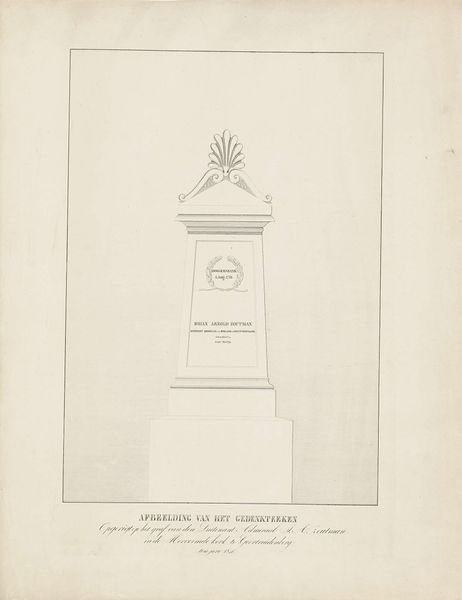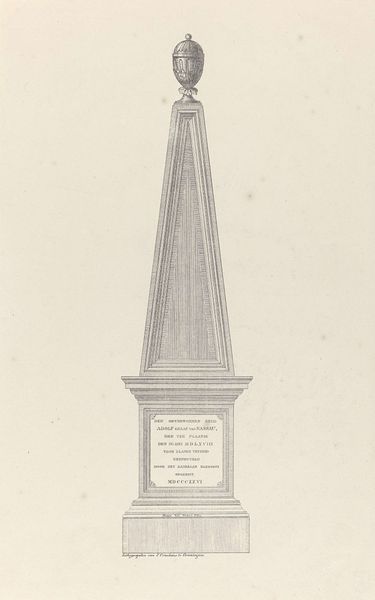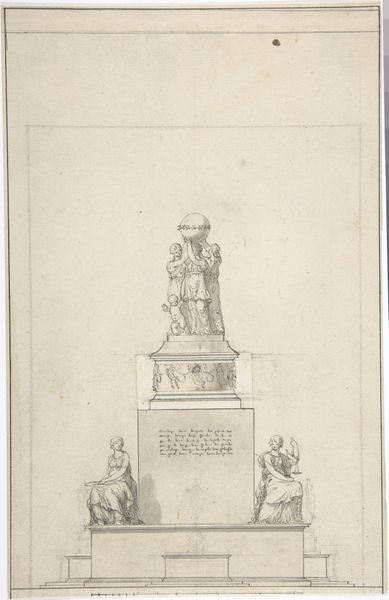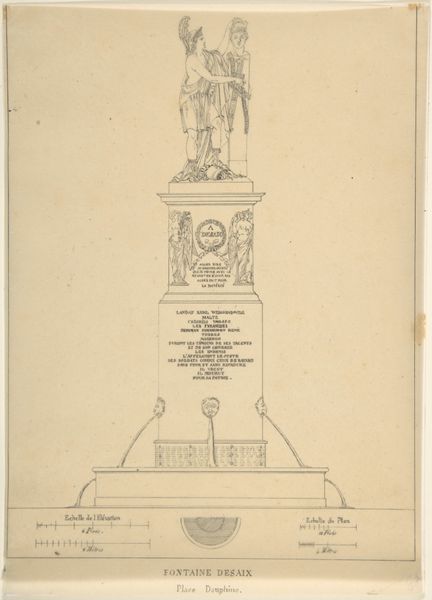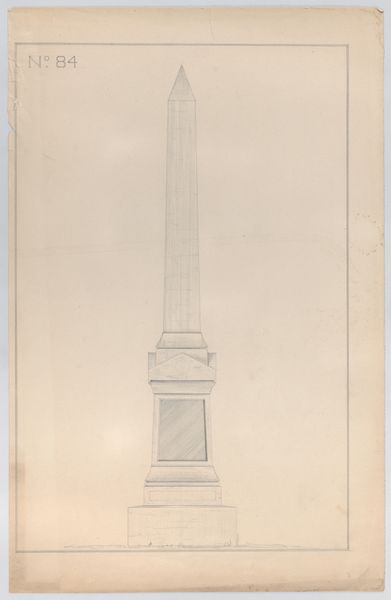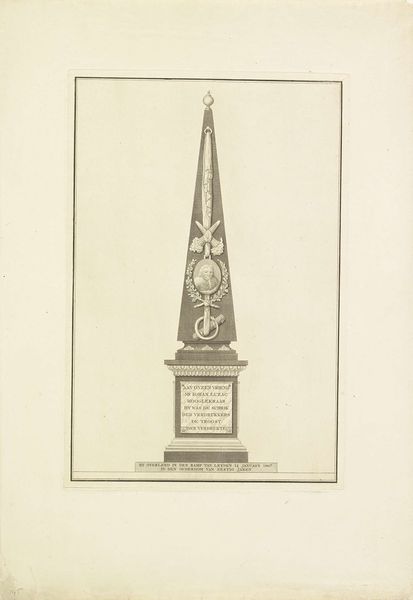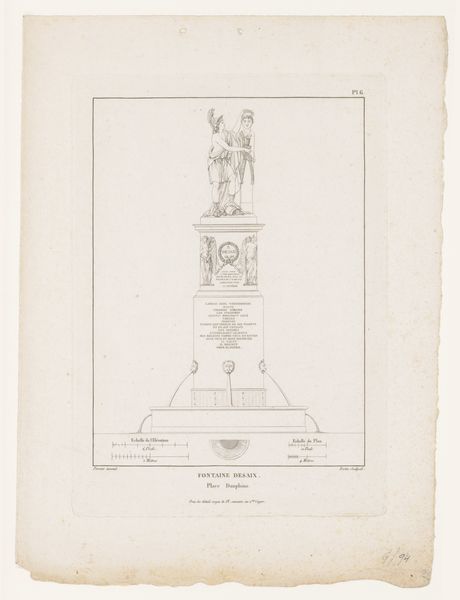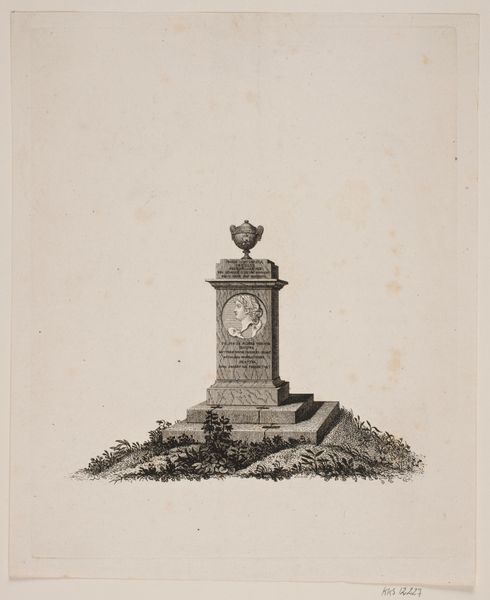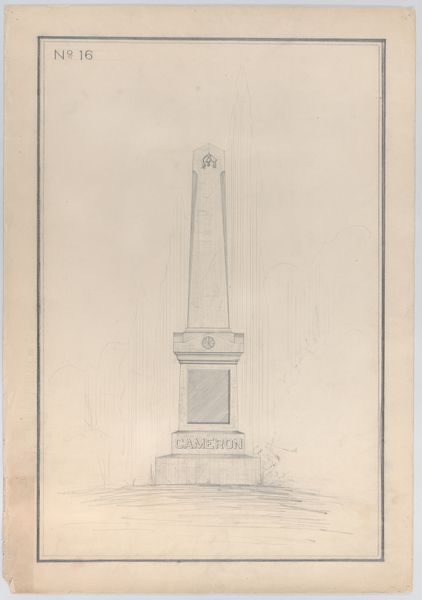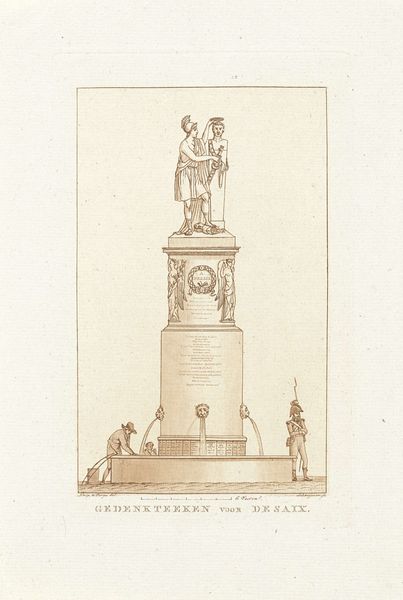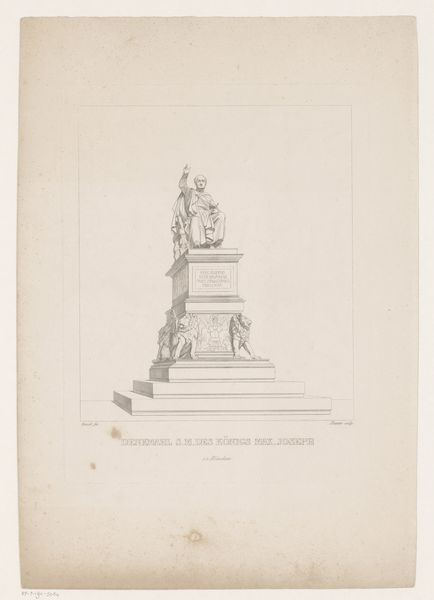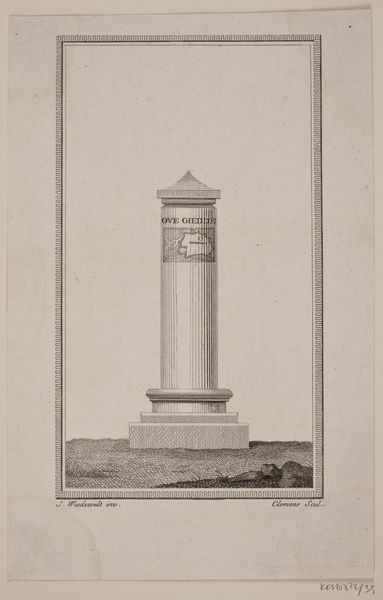
drawing, pencil
#
drawing
#
neoclacissism
#
pencil sketch
#
landscape
#
geometric
#
pencil
Dimensions: height 303 mm, width 210 mm
Copyright: Rijks Museum: Open Domain
This is an architectural drawing from 1830 for the grave monument of Justus Klinkhamer. The central motif is a solitary Doric column, a potent symbol of strength, resilience, and enduring memory. Consider how the column, originating in ancient Greek temples as a structural support, transcends its architectural function. We see it repurposed in Roman monuments, early Christian basilicas, and Renaissance palaces. It reappears here, diminished in size, yet potent in its symbolic evocation of classical virtues and eternal remembrance. Note how the column, once vital to a building’s structure, now stands alone as a grave marker. It speaks of a transformation, a transition from the earthly to the eternal. The human psyche latches onto this symbol—the column embodies our collective longing for permanence, for echoes of our existence to reverberate through time. It acts as a visual metaphor for the self, stripped bare yet resolute, facing the immutable void. This image engages us on a subconscious level. Thus, the column's cyclical journey continues. It stands as a quiet testament to Klinkhamer, but also to the relentless march of time and the persistence of cultural memory.
Comments
No comments
Be the first to comment and join the conversation on the ultimate creative platform.


